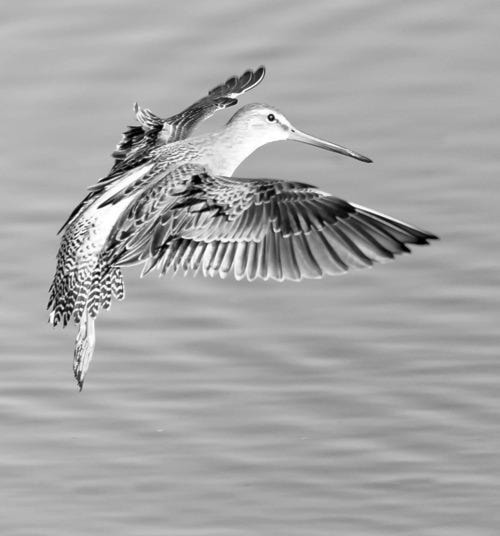The advancements of camera and lens technology has brought increased interest in photographing birds for amateur photographers. I have read that the two most popular pastimes for North Americans is anything to do with gardens, or anything to do with birds; and photography is fortunately a perfect fit with either of those.
Last week I stopped in to see my friend Dennis Oldridge, who is in my opinion, pretty good at bird photography. I anticipated we would talk about his recent forays and, I’d get to see lots of bird pictures. That’s good because I enjoy bird photography. Aside from an occasional excursion when a friend takes me to an eagle’s nest, or my photos of the little birds that come to our patio feeders, I am really, mostly, an appreciator of others’ efforts at bird photography.
Oldridge says he has always loved to wander the Canadian backwoods and remembered his days before photography as a scout leader when photography was only an excuse to get outside.
Currently he would define himself as a nature and wildlife enthusiast with bird photography as his main interest. He said he discovered professional photographers Arthur Morris and Moose Petersen and the wonderful images of birds that they made inspired him to immerse himself in bird photography.
A bird photographer I once spent an afternoon with told me that background was very important. A busy background interferes with how the birds are viewed, and preferred either solid skies or green-coloured water.
He further explained that the most successful condition for photography is lots of light, with the sun at the photographer’s back, illuminating the birds evenly.
He told me using a manual exposure minimizes exposure variation with changing light conditions as birds fly, or quickly move across the water.
I asked Oldridge what comments he would provide to someone wanting to do bird photography.
He says, “It takes lots of practice”, and suggests using higher shutterspeeds, as he regularly shoots at 1/1600 of a second. He prefers morning or late afternoon light, although a cloudy or even rainy day is better for white birds, because there is less contrast.
He likes to stop down a bit (underexposing) when shooting birds in flight, or those paddling around in the water because there is lots of reflection that can trick a photographer’s meter.
He also says “Find some easily accessible location where birds are accustomed to people, for example, MacArthur Island in Kamloops, and be patient. Let them get used to you.”
To do that Oldridge starts by taking pictures slowly so the birds get used to the noise the shutter makes.
For local adventure he sometimes wanders small backwoods lakes looking for his favourite birds, eagles, sandhill cranes, wood ducks, and he is always on the look out for bluebirds.
His perfect bird photography vacations would be at Bosque del Apache, in New Mexico, or Merritt Island, in Florida; and he would love to take his camera out along the Louisiana coast.
For photographers it always comes down to what equipment works best.
Oldridge says, “Get the longest lens you can afford.” The faster it focuses the better, and for that he prefers prime lenses (lenses with a fixed focal length). In his opinion 300mm is the shortest telephoto he would use, and even then he would sometimes add a teleconverter.
Oldridge’s camera is a Nikon D3. The D3 is FX or a full frame sensor camera. Full frame digital means that the sensor is the same size as the negative on a 35mm film. He says that a DX or “cropped” sensor camera like Nikon’s D300 would give a better reach for photographing birds. A DX digital camera has a sensor smaller than a 35mm frame, giving it a 1.5 crop factor.
For example, multiply 1.5 times 300 (the 300mm lens) making that lens effectively a 450mm lens.
DX gives a greater magnification for the same focal length due to the cropping, so an FX camera will need a longer focal length to achieve the same magnification.
These are my thoughts this week. Contact me at emcam@telus.com or at 250-371-3069 or stop by Enman’s Camera at 423 Tranquille Road in Kamloops. I offer professional wedding photography, photographic instruction, and sell an interesting selection of used photographic equipment. My website is www.enmanscamera.com.
